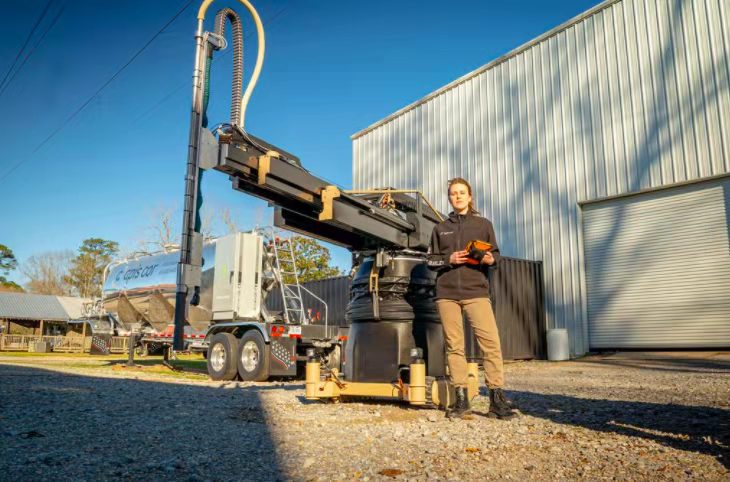Investors have a new opportunity to get involved in an emerging technology aimed at transforming home construction.
Apis Cor, has developed 3D printing technology for the construction industry, which will cut the time and cost of building housing. “It can take about seven months to build a finished wood-stick house, but with 3D printing technology, we actually can build the house within two to three months,” said Co-Founder and CEO Anna Cheniuntai. “While only the walls are printed, the 3D printing technology allows us to rethink all of the remaining processes and bring innovation.”
These cost savings can help support the development of more affordable housing options, Cheniuntai said. The need for more affordable housing is on the rise. In Texas, for example, almost half of its residents spend more than 30% of their household income on housing costs and utilities, according to the trade association Texas Affiliation of Affordable Housing Providers.

SmarTech Analysis, a market research firm focused on the 3D printing and additive manufacturing industry, predicts 3D printing in construction will be a $40 billion market by 2027. The technology has particular appeal in the housing sector because it can speed up the construction process and reduce costs — two key elements in an industry struggling with rising material costs, a shortage of labor and supply chain challenges.
How 3D printing technology builds a house
There are three key components to the Apis Cor system: a 3D printer called Frank, a mixing and pumping unit called Gary and a material delivery truck called Mary.
“We created (Frank), this specialized robot, from scratch,” Cheniuntai said. “We knew that if you want to really innovate with robotics for printing houses, the equipment had to be mobile, transportable and easy to operate.”

A standard pickup truck with a flatbed trailer can haul Frank and Gary to a construction site, where an operator uses a joystick to drive them off the truck and to the building’s foundation. Together, they can print the walls of a house or other buildings using a concrete-like mortar.
Apis Cor’s initial projects illustrate the technology’s versatility. Its first printed house was in the tundra of Eastern Europe. Its second project, a two-story administrative building in the desert climate of Dubai, is currently recognized by Guinness Book of World Records as the world’s largest 3D printed building.
“Last year, we 3D printed two buildings in the United States,” Cheniuntai said. “One is a residential building in Missouri and the other is the first fully-permitted 3D-printed commercial building in Boca Chica, Texas.”
Funding to grow
With the proof of concept complete, the next stage for Apis Cor, which is based in Melbourne, Florida, is to scale its technology. The company presented at startup accelerator Alchemist Accelerator’s demo day in January 2021 and received additional early-stage investment from the venture capital and private equity firm At One Ventures.
The company plans to manufacture its robots in Florida, Cheniuntai said, with a goal of having 1,000 printed houses within two years and 400 printers in operation by 2027.
To help fund this growth, Apis Cor seeks to raise $35 million by selling common shares priced at $1 a share. The shares are sold under the U.S. Securities and Exchange Commission’s Regulation A+, which is a path created for smaller, emerging companies to raise capital without going through the more traditional, registered initial public offering process designed for larger companies.
For 2023, Apis Cor has three projects scheduled with national builders that focus on affordable housing developments. It is focusing on gaining interest from residential home builders and contractors in southern states, including Florida, Texas, Alabama and Georgia, where concrete block construction is widely used.
To speed adoption, the company has created an online learning hub and in-house workshops, called Apis Cor University, and a showroom where people can see the robots and wall samples. Apis Cor University’s first online course covers the fundamentals of construction 3D printing.
“This is where we can accelerate customer acceptance,” Cheniuntai said. “It’s another way we are bringing some revolution in the accessibility of the technology.”
The Article is from Austin Business Journal, copyright belongs to owner





